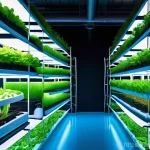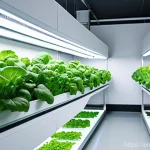Hey there, fellow tech enthusiasts and farming innovators! Can you believe how fast our world is changing? It feels like just yesterday we were marveling at GPS-guided tractors, and now we’re on the cusp of a true agricultural revolution.
I’ve personally been following the developments in autonomous farm machinery for a while now, and let me tell you, what’s happening out there is nothing short of incredible.
We’re talking about machines that plant, monitor, and even harvest crops with a precision and efficiency that human hands simply can’t match, often working tirelessly around the clock.
It’s not just about flashy new gadgets; this is about solving some of farming’s biggest headaches – like persistent labor shortages, rising operational costs, and the urgent need for more sustainable practices to feed our growing planet.
From what I’ve seen, companies like John Deere and Kubota are really leading the charge, rolling out next-gen electric and AI-powered equipment that’s already transforming farms across North America and Europe.
The shift is palpable, and the benefits, from significant cost reductions to healthier crops and a lighter environmental footprint, are truly game-changing.
It’s a huge leap towards a more resilient, data-driven agricultural future, and frankly, it’s pretty exciting to witness. Ready to understand how these self-driving powerhouses are reshaping our food supply and what it means for everyone, from farmers to consumers?
Let’s dive deeper and uncover all the details!
The Silent Revolution Redefining Agriculture

You know, there’s a quiet but powerful shift happening right beneath our noses, or rather, right in our fields. I’ve spent a fair bit of time talking to farmers and seeing these machines in action, and honestly, it’s nothing short of breathtaking. We’re not just talking about bigger, better tractors anymore. We’re witnessing a complete reimagining of how food gets from the earth to our tables, driven by machines that operate with an almost uncanny intelligence. Think about it: a fleet of robots precisely planting seeds, monitoring soil health, and even harvesting delicate crops with minimal human intervention. It truly feels like we’ve fast-forwarded into a sci-fi future, but it’s happening right now, transforming the landscape of agriculture piece by piece. The meticulous care these autonomous systems can provide, far beyond what even the most dedicated human crew could achieve consistently, is reshaping productivity and sustainability goals across the board. From what I’ve observed, the initial skepticism is quickly giving way to genuine excitement as farmers see the tangible benefits, from reduced waste to healthier yields. It’s a fundamental change that’s only just beginning to truly blossom.
Precision Planting and Harvesting at Scale
One of the most immediate and impactful areas where autonomous machinery shines is in the sheer precision it brings to planting and harvesting. I’ve seen these systems plant seeds with such consistent spacing and depth that it optimizes every inch of arable land. Imagine a future where every single plant gets exactly what it needs, when it needs it, minimizing resource waste and maximizing growth potential. When it comes to harvesting, especially for delicate crops, autonomous harvesters use advanced sensors and AI to identify ripeness and pick with a gentle touch, reducing spoilage and ensuring higher quality produce reaches the market. It’s truly a game-changer for efficiency and crop health.
From Human Labor to Machine Collaboration
The conversation often turns to labor, and I’ve found that it’s less about replacing people and more about reallocating their invaluable skills. With labor shortages becoming a real pinch point for many farms, these autonomous systems are stepping in to handle the repetitive, physically demanding tasks. This frees up human workers to focus on more strategic roles, like managing the technology, analyzing data, or making high-level decisions about crop rotations and market demands. It’s a shift from brute force to brainpower, elevating the roles of everyone involved and making farm work more appealing and sustainable in the long run.
The Brains Behind the Brawn: Advanced AI and Sensor Tech
Peeking under the hood of these incredible machines, you quickly realize it’s not just about powerful engines and robust frames anymore. What truly sets autonomous farm equipment apart is the sophisticated array of AI and sensor technology that acts as its brain and nervous system. I’ve been fortunate enough to get up close with some of these systems, and the level of integration and intelligence is mind-boggling. We’re talking about real-time data analysis from multiple sources – soil moisture, nutrient levels, weed detection, crop health – all being processed instantly to make informed decisions without human intervention. This isn’t just automation; it’s smart automation, where machines learn, adapt, and optimize operations on the fly. It’s like having an army of agricultural experts working tirelessly, ensuring every decision is data-driven and precise. From my perspective, this tech isn’t just making farming easier; it’s making it smarter, more responsive, and incredibly efficient, pushing the boundaries of what we thought was possible in agriculture.
Real-time Data and Predictive Analytics
Imagine knowing exactly when and where to irrigate, fertilize, or even anticipate a pest outbreak before it becomes a major problem. That’s the power of real-time data combined with predictive analytics. Autonomous systems are constantly collecting vast amounts of data from the field, which is then fed into AI algorithms. These algorithms can identify patterns, forecast potential issues, and recommend or even execute precise interventions. This proactive approach minimizes waste, maximizes resource utilization, and ultimately leads to healthier crops and higher yields. It’s a level of insight that traditional farming methods simply couldn’t offer, giving farmers a significant edge.
Computer Vision and Machine Learning for Crop Health
One of the coolest aspects I’ve encountered is how these machines ‘see’ and ‘understand’ the farm. Using high-resolution cameras and advanced computer vision, autonomous equipment can identify individual plants, distinguish between crops and weeds, and even detect early signs of disease or nutrient deficiencies. Machine learning models, continuously refined, allow these systems to get better at these tasks over time, becoming incredibly accurate. It’s like having an expert agronomist meticulously inspect every single plant across acres of land, but at a speed and scale that’s impossible for humans. This precision means targeted treatments, reduced chemical use, and healthier, more resilient crops.
Cultivating a Greener Tomorrow: Sustainability Through Automation
For me, one of the most compelling arguments for autonomous farm machinery isn’t just about efficiency or profit, but about its profound potential to usher in a new era of sustainable agriculture. I’ve always been passionate about finding ways to live in harmony with our planet, and seeing these technologies in action has truly solidified my belief that they are a key part of the solution. When machines can apply fertilizers and pesticides with millimeter precision, or manage irrigation based on hyper-local soil conditions, the reduction in chemical runoff and water waste is simply staggering. This isn’t just good for the environment; it also means healthier soil for future generations and a significantly smaller carbon footprint from farming operations. It’s about being smarter with our resources, respecting the land, and ensuring that our food production systems are viable for the long haul. The move towards electrification for many of these autonomous units further slashes emissions, making the promise of truly eco-friendly farming a tangible reality, and that’s something I find incredibly exciting.
Minimizing Environmental Impact
Autonomous farm equipment fundamentally changes how we interact with the environment. By reducing over-application of inputs like water, fertilizers, and pesticides, these systems drastically cut down on waste and prevent harmful runoff into local ecosystems. For instance, targeted weeding robots can eliminate the need for broad-spectrum herbicides in many cases, protecting biodiversity and soil health. This precision approach not only saves resources but also lessens the environmental load of agriculture, paving the way for more ecological and responsible farming practices that I believe are absolutely essential for our future.
Energy Efficiency and Electrification
Beyond precision, the shift towards electric autonomous farm machinery offers a monumental leap in energy efficiency and sustainability. Many of these newer models are designed to be battery-powered, reducing reliance on fossil fuels and significantly cutting down on greenhouse gas emissions. I’ve heard from farmers who’ve seen their fuel bills drop dramatically, which is a win for both their wallets and the planet. This move towards cleaner energy sources is a critical step in making agriculture a truly sustainable industry, and it’s a trend I’m personally thrilled to see accelerate.
The Economic Upside: Boosting Bottom Lines
Let’s be real, while innovation and sustainability are fantastic, the practical economics of farming always play a huge role. From what I’ve gathered talking to farmers who’ve already embraced this tech, the financial benefits of autonomous machinery are far from negligible – they’re often transformative. It’s not just about saving a bit here and there; it’s about fundamentally reshaping the cost structure of their entire operation. Labor, fuel, inputs like seeds and chemicals, even equipment wear and tear – all these major expenditures see significant reductions. When you combine reduced operational costs with increased yields and higher-quality produce, the return on investment starts looking incredibly appealing. It’s a powerful incentive that’s driving widespread adoption, showing that what’s good for the planet and good for efficiency can also be incredibly good for the farm’s profitability. I’ve heard countless anecdotes about farmers recovering their investment much faster than anticipated, which speaks volumes about the tangible economic advantages.
Cutting Operational Costs
One of the most immediate impacts I’ve observed is the substantial reduction in operational costs. For many farms, labor is a huge expense, and while autonomous machines require initial investment, they dramatically cut down on long-term labor costs. Beyond that, the precision application of inputs means less wasted fertilizer, water, and pesticides, which are significant recurring expenses. These savings aren’t just theoretical; they translate directly into a stronger bottom line, making farms more resilient to market fluctuations and economic pressures. It’s a shrewd business move that pays dividends.
Improved Yields and Product Quality
It’s not just about cutting costs; it’s also about boosting revenue through better yields and superior product quality. The consistent, optimized care that autonomous systems provide leads to healthier, more robust crops. I’ve seen fields where every plant appears uniformly strong, a direct result of precise planting, monitoring, and targeted treatments. This uniformity and health often translate to higher yields and, crucially, higher quality produce that fetches better prices in the market. It’s a win-win: less waste and more marketable product, which I’ve found to be a massive motivator for farmers to invest in this technology.
Navigating the New Frontier: Challenges and Opportunities
While the future of autonomous farming glitters with promise, it’s also important to acknowledge that it’s a new frontier, and like any frontier, it comes with its own set of challenges. I’ve had candid conversations with early adopters, and while their enthusiasm is infectious, they’re also realistic about the hurdles. We’re talking about significant upfront investment for some of this cutting-edge tech, which can be a barrier for smaller farms. Then there’s the learning curve – integrating complex software and hardware into existing operations isn’t always plug-and-play. And let’s not forget the crucial need for robust connectivity in rural areas, which is often still lacking. However, for every challenge, there’s a corresponding opportunity. The demand for skilled technicians is soaring, opening up new career paths. The data collected offers unprecedented insights, fostering more informed decision-making. It’s a dynamic period of adaptation and growth, and I truly believe that with the right support and continued innovation, these challenges will be overcome, leading to even greater opportunities for everyone involved in agriculture.
Overcoming Initial Investment Hurdles
The price tag on some of these advanced autonomous systems can be a bit daunting, especially for smaller family farms. This initial investment hurdle is a genuine concern, but I’ve noticed a trend of innovative solutions emerging, like equipment-as-a-service models and government grants, designed to make this technology more accessible. Furthermore, the long-term cost savings and efficiency gains often justify the upfront expense, with many farmers seeing a quicker return on investment than they initially anticipated. It’s about finding the right financing and support structures to bridge that initial gap.
The Connectivity Conundrum in Rural Areas
For autonomous farming to truly thrive, reliable, high-speed internet connectivity across vast rural landscapes is non-negotiable. These machines rely heavily on cloud-based data, GPS, and real-time communication, and spotty internet can severely hinder their capabilities. I’ve heard frustrations from farmers about this very issue. However, this challenge is also a massive opportunity for infrastructure development, pushing for broader and more robust broadband access in agricultural regions. Solving this will unlock even greater potential for smart farming technologies.
A Day in the Life: How Autonomous Tech is Changing Farm Work
What does a typical day look like on an autonomous farm? I’ve seen it evolve firsthand, and it’s a world away from the traditional image of a lone farmer toiling in the fields from dawn till dusk. Instead, I’ve observed farmers becoming more like tech managers, overseeing fleets of intelligent machines from a control center, or even from their phone. They’re analyzing data dashboards, troubleshooting minor alerts, and making high-level strategic decisions rather than manually operating every piece of equipment. The physical toll on farmers is dramatically reduced, and the work itself becomes more analytical and less strenuous. This shift isn’t just about efficiency; it’s about improving the quality of life for farmers, allowing them more time for family, for planning, and for innovation. It’s truly reshaping the farming lifestyle, making it a more modern, data-driven profession. I find this evolution incredibly inspiring, as it ensures the resilience and attractiveness of farming as a career for generations to come.
| Technology | Function | Impact on Farming |
|---|---|---|
| GPS Guidance | Precise navigation and path following for machinery | Reduced overlap, optimized fuel use, consistent planting/spraying patterns. |
| AI-Powered Vision Systems | Identifies crops, weeds, disease, and ripeness | Targeted treatments, reduced chemical use, improved yield quality, early problem detection. |
| Swarm Robotics | Small, interconnected robots working collaboratively | Increased efficiency, reduced soil compaction, flexibility for varied tasks, 24/7 operation. |
| Electric Propulsion | Battery-powered machinery | Reduced fossil fuel consumption, lower emissions, quieter operation, reduced maintenance. |
From Operator to Overseer: New Skill Sets for Farmers

The role of the farmer is undergoing a fascinating transformation. Instead of spending hours behind the wheel of a tractor, farmers are now becoming adept at managing complex software interfaces, interpreting data analytics, and understanding the nuances of AI algorithms. It’s a shift from purely mechanical skills to a blend of agricultural knowledge and technological expertise. I’ve seen farmers enthusiastically embrace this learning curve, realizing that mastering these new tools empowers them to make more informed decisions and run their operations with unprecedented precision. This evolution is vital for attracting a new generation to agriculture, offering stimulating and intellectually challenging careers.
Enhanced Work-Life Balance and Safety
Beyond the operational benefits, I’ve heard so many farmers express how autonomous tech has positively impacted their personal lives. The ability to monitor fields remotely, receive alerts on their phone, and manage tasks from a central hub means less time spent physically in the field, especially during long planting or harvesting seasons. This translates to more time with family, reduced physical strain, and a significant improvement in work-life balance. Furthermore, removing humans from hazardous tasks, like spraying chemicals or operating heavy machinery in challenging conditions, drastically improves safety on the farm. It’s truly making farming a more humane and sustainable profession from a personal well-being perspective.
글을 마치며
As we wrap up our journey through the incredible world of autonomous agriculture, it’s impossible not to feel a surge of optimism for the future of food. I truly believe we’re on the cusp of a golden age for farming, where technology doesn’t just assist, but truly transforms, making our food systems more resilient, sustainable, and productive than ever before. It’s an exciting time to witness this revolution unfold, and I can’t wait to see the next wave of innovations and how they continue to shape the very foundations of our food supply. I feel like we’re just scratching the surface of what’s possible, and that’s a truly exhilarating thought.
알아두면 쓸모 있는 정보
Here are a few nuggets of wisdom I’ve picked up, especially if you’re thinking about or just curious about autonomous farming – these are the things I wish someone had told me when I first started digging into this fascinating field:
1. Consider Your Connectivity First
Before diving into any high-tech farm equipment, seriously assess your farm’s internet connectivity. Reliable broadband is the absolute backbone of most autonomous systems, enabling real-time data transfer, remote monitoring, and crucial software updates. It’s like having a supercar but no fuel – you won’t get far without it. From what I’ve seen, investing in robust rural internet solutions might just be your first and most crucial step, perhaps even more vital than the machines themselves, as it underpins everything else.
2. Start Small, Think Modular
You don’t have to overhaul your entire operation overnight, and honestly, I wouldn’t recommend it. Many experts I’ve spoken with and farmers I’ve observed suggest starting with modular, smaller-scale autonomous solutions, like precision weeding robots or automated irrigation systems, to get a feel for the technology and integrate it gradually. This approach allows for a smoother transition, helping you build confidence and expertise within your team without the daunting commitment of a massive initial disruption. It’s all about learning as you go, and these smaller steps really make a difference in building confidence.
3. Upskilling is Key for Your Team
The shift to autonomous farming isn’t about eliminating human labor but profoundly evolving it. Encourage your team to embrace new skills in data analysis, tech management, and system maintenance. I’ve seen firsthand how farms that invest in training their existing workforce create a more engaged and capable team, ready to tackle the challenges and opportunities of modern agriculture. It fosters a sense of empowerment, transforming traditional roles into exciting, high-tech careers that feel more rewarding and secure in the long run. It’s truly a collaborative effort between humans and machines.
4. Data Security is Paramount
With great data comes great responsibility! Autonomous systems generate a phenomenal amount of information about your crops, soil, and operations – it’s literally a goldmine of insights. Ensuring robust cybersecurity measures are in place to protect this valuable data from breaches or misuse is absolutely critical. Think of it as protecting your farm’s intellectual property and competitive edge; it’s a non-negotiable aspect of digital farming that should be taken as seriously as protecting your physical assets. Don’t underestimate the value of that digital footprint!
5. Explore Funding and Grant Opportunities
Don’t let the initial investment deter you; I know that price tag can look intimidating. Many governments and agricultural organizations, recognizing the importance of sustainable innovation, offer a fantastic array of grants, subsidies, or low-interest loans specifically designed to help farms adopt advanced and sustainable technologies, including autonomous equipment. It’s absolutely worth doing your homework and exploring these opportunities, as they can significantly reduce the financial burden and make cutting-edge tech far more accessible than you might initially think. You’d be surprised what support is out there!
중요 사항 정리
To distill everything we’ve explored and bring it all into sharp focus, here are the absolute essentials about autonomous farm machinery that I believe everyone should take away from this discussion:
Unprecedented Efficiency and Precision
• Autonomous systems bring unparalleled precision to every single aspect of farming, from the moment a seed is planted to the delicate process of harvesting. This hyper-targeted approach dramatically boosts efficiency, optimizes resource use, and minimizes waste. It’s like having a dedicated expert tending to every single plant, ensuring maximum output and quality, which ultimately means a stronger yield and happier customers.
A Leap Towards Sustainability
• These technologies aren’t just about making things faster; they’re fundamentally paving the way for truly sustainable agriculture. By drastically reducing chemical inputs, conserving precious water resources through intelligent irrigation, and increasingly shifting towards electric power, autonomous farming significantly minimizes our environmental footprint. This commitment to ecological responsibility ensures a healthier planet and more viable farming for generations to come – a future I’m incredibly excited about.
Transforming Farm Economics
• Beyond the environmental benefits, the economic advantages are profound and, frankly, hard to ignore. Farmers are seeing significant reductions in operational costs, from less fuel consumption and optimized labor allocation to more efficient use of expensive fertilizers and pesticides. When you couple these savings with increased yields and higher quality produce, the result is a stronger bottom line, making farms more resilient and profitable in what can often be a challenging market. It’s a smart business move, plain and simple.
Evolving Role of the Farmer
• The modern farmer is no longer just a tiller of the soil but is rapidly evolving into a sophisticated tech manager, a keen data analyst, and a strategic decision-maker. This exciting shift elevates the entire profession, offering a better work-life balance and significantly safer working conditions by taking humans out of hazardous tasks. It’s making farming an intellectually stimulating and attractive career for new generations, ensuring a vibrant future for agriculture.
Embrace the Future, Address the Challenges
• While it’s true that challenges like significant upfront costs and the perennial issue of robust rural connectivity exist, the opportunities presented by autonomous agriculture far outweigh these hurdles. With continuous innovation, collaborative industry efforts, and supportive governmental policies, these challenges are not just surmountable but also drive further progress. This forward momentum is leading us towards a more productive, efficient, and sustainable global food system, which truly benefits us all in the long run.
Frequently Asked Questions (FAQ) 📖
Q: So, how are these incredible autonomous farm machines actually helping farmers on the ground, and what kind of real-world impact are you seeing?
A: Oh, that’s a fantastic question and one I get a lot! From what I’ve personally observed and heard directly from farmers, the impact is nothing short of revolutionary.
Think about it: farming has always been a battle against time, labor shortages, and unpredictable weather. These autonomous machines, especially the ones from powerhouses like John Deere and Kubota, are tackling these challenges head-on.
First off, labor. Finding skilled farmhands is becoming increasingly difficult and expensive, especially in places like the Midwest or even parts of Europe.
These self-driving units can work around the clock, needing minimal human oversight. This means tasks like planting, weeding, and even harvesting can be done more efficiently, freeing up human workers for more complex, decision-making roles.
I’ve heard stories of farms increasing their operational hours significantly, getting crops planted or harvested at the optimal time, even through the night.
Then there’s the precision. My goodness, the precision! Traditional farming can lead to uneven application of fertilizers or pesticides, but with AI-powered machines, every seed is placed perfectly, every drop of water is measured, and every inch of soil is analyzed.
This isn’t just about saving money on inputs; it’s about healthier crops, better yields, and less waste. I remember visiting a farm in Iowa where they showed me how their autonomous sprayer could differentiate between weeds and crops with incredible accuracy, reducing herbicide use by a huge margin.
It’s truly mind-blowing to see in action! Ultimately, it leads to significant cost savings on labor, fuel, and materials, directly boosting a farmer’s bottom line.
It’s like having an army of tireless, super-accurate helpers on your side.
Q: This all sounds amazing, but are these self-driving tractors and robots truly becoming a common sight, or is this still a glimpse into the distant future?
A: That’s a very fair question, and one I often wondered about myself until I started seeing it with my own eyes! While it’s true we’re not yet at a point where every farm field is buzzing with autonomous robots, the transition is happening much faster than many people realize, especially in commercial agriculture across North America and Europe.
It’s definitely not a distant future anymore; it’s a very active present! I’ve personally seen fully autonomous tractors from companies like John Deere working vast fields, particularly in areas where large-scale operations are common.
They’re often deployed for tasks that are repetitive and cover large areas, like tilling, planting, and spraying. What’s fascinating is how these machines integrate with existing farm infrastructure.
They’re not just standalone units; they’re part of a larger, data-driven ecosystem. Farmers are using sophisticated software to plan routes, monitor performance, and analyze data in real-time, often right from their tablets or even their kitchen table.
Smaller, specialized robots are also gaining traction, particularly in high-value crops or for specific tasks like weeding. Think about vegetable farms in California or vineyards in France – these places are adopting smaller, agile robots that can navigate tight spaces and perform delicate tasks with incredible precision.
It’s a staggered adoption, for sure. Large farms are investing in the big iron, while smaller, specialized operations are finding niche solutions. It’s certainly a more common sight than even five years ago, and I predict we’ll see this trend accelerate dramatically in the coming years as the technology becomes even more robust and cost-effective.
Q: Beyond the immediate benefits, what’s your take on the long-term impact of autonomous farming on environmental sustainability and the agricultural workforce?
A: Oh, now you’re hitting on some of the deeper, more profound implications, and these are questions I’ve spent a lot of time pondering! Personally, I believe the long-term impact on both environmental sustainability and the workforce will be overwhelmingly positive, though not without its own set of adjustments.
From an environmental standpoint, this technology is a game-changer. Imagine machines that can precisely apply only the amount of fertilizer or pesticide needed, exactly where it’s needed, drastically reducing runoff and chemical usage.
I’ve heard researchers talking about how this “precision agriculture” can lead to significantly healthier soil, reduced water consumption through targeted irrigation, and a lower carbon footprint because machines can operate more efficiently with optimized routes and often electric power.
I’m especially excited about the potential for electric autonomous machinery to reduce reliance on fossil fuels, which is a massive win for the planet.
It’s about cultivating smarter, not just harder. As for the workforce, this is where it gets interesting. Will jobs change?
Absolutely. But I don’t see it as a mass displacement. Instead, I envision a shift from physically demanding, repetitive field labor to more skilled roles in technology management, data analysis, and robotics maintenance.
Farmers and their teams will become more like “technologists of the field,” leveraging data and managing sophisticated equipment. There’s a huge opportunity for new training programs and upskilling initiatives.
I think it empowers a new generation to enter agriculture, appealing to those who are tech-savvy. It’s less about replacing humans and more about augmenting their capabilities, creating a more sustainable and intellectually stimulating agricultural future.
It’s a huge shift, but one that promises to make farming a more appealing and viable career for years to come.






